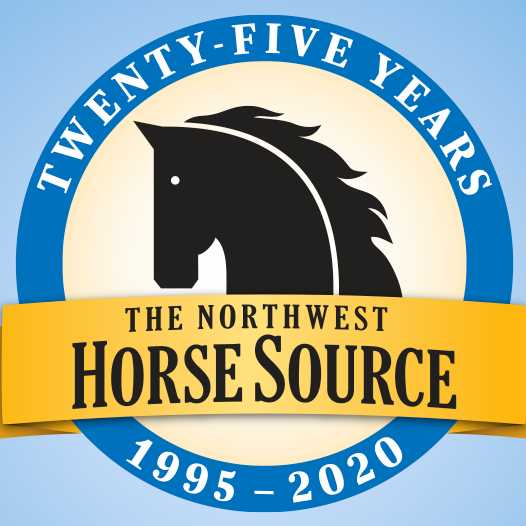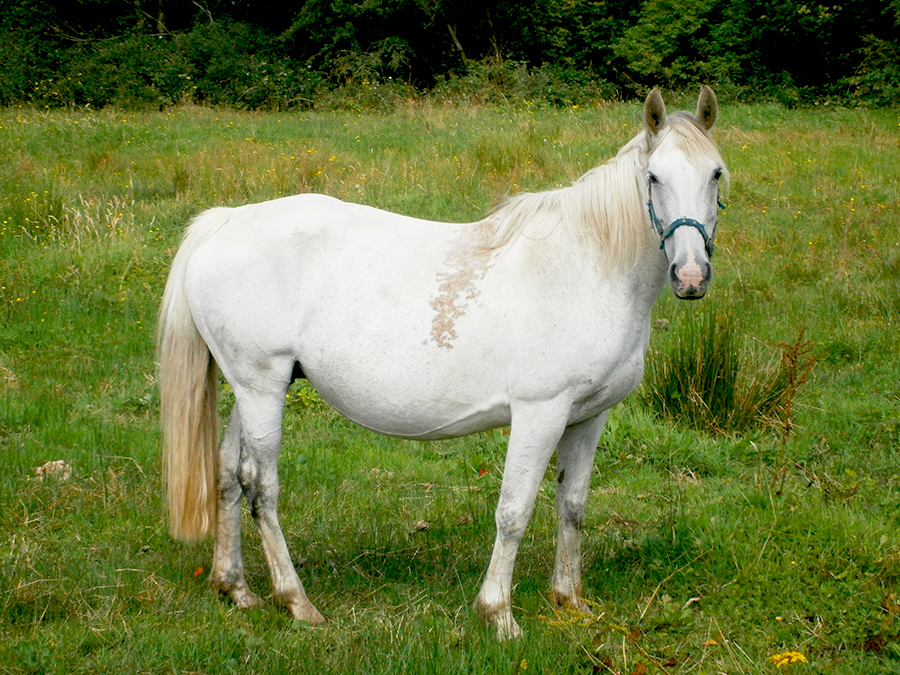By Juliet M. Getty, Ph.D.
Inflammation. The very word triggers images of pain, redness and swelling. But in the case of injury or infection, acute inflammation is actually a beneficial means of restoring the body to health. Specific cells are called into action to remove the source of injury or infection and repair damaged tissue. It’s when inflammation becomes chronic that areas of the body may lose function. Any part of the body can be impacted by inflammation, including joints, feet, lungs, muscles, skin, digestive tract, reproductive function, heart, nervous system, pancreas, liver, as well as the hypothalamic brain centers responsible for releasing dopamine and recognizing leptin.
This article focuses on the inflammatory impact that sugar has on your horse’s health. There are several other causes of inflammation, such as stress and obesity, high dietary levels of linoleic acid (an omega 6), free-radical consumption from poorly stored fatty feeds, and trans fat (partially hydrogenated oils); however, the damaging impact of high sugar/high starch diets is commonplace. Sweet feeds and diets high in cereal grains (e.g., oats, barley, corn, wheat, rice, and millet) can lead to health problems over time. Research suggests that this type of diet actually promotes high blood concentrations of pro-inflammatory molecules known as cytokines.
Cytokines can be problematic
Two cytokines in particular, known as interleukin (IL)-1β and IL-6, are stimulated by insulin secretion in response to elevated blood glucose from sugar and starch digestion.[i] Furthermore, overconsumption of oats or other starchy feed, beyond what is digested in the small intestine, can result in hindgut microbial fermentation to organic acids, lowering the cecal pH,[ii] and increasing blood lipopolysaccharide (LPS). Elevated LPS induces insulin resistance and increases proinflammatory cytokines.[iii] These scenarios start a cycle of whole-body, low-grade chronic inflammation that further exacerbates insulin resistance. Even the healthy horse may develop endocrine-related disorders as he ages.
In addition to cytokines, hyperglycemia (high blood glucose) also causes the body to generate inflammatory free radicals. These highly volatile, destructive molecules can overwhelm the horse’s antioxidant defenses, alter DNA, accelerate aging, and lead to diseases throughout the body, including the cell’s lessened sensitivity to key hormones.
Signs of low-grade, chronic inflammation
Regional fat deposits (along the neck, down the spine, tail head, shoulders, chest, or even above the eyes) are a clear indication of insulin resistance. Elevated insulin equates with inflammation and can create health issues such as laminitis and leptin resistance. Behaviorally, horses can become lethargic. Research with humans and laboratory animals describes the profound effects of inflammatory cytokines on the brain and behavior, manifesting itself as depression and fatigue.[iv] In horses, such symptoms are common in pituitary pars intermedia dysfunction (PPID), commonly referred to as equine Cushing’s disease, and worsen as the brain’s dopamine-releasing neurons experience progressively more damage.[v]
Fructose – another concern
Fructose is a monosaccharide generated from digestion of sucrose, found in molasses, honey, and other sugars typically used to sweeten feeds. Fructose has the ability to induce metabolic syndrome in laboratory animals.[vi] It also has been shown to induce leptin resistance in rats.[vii] Its unique metabolic pathway may be responsible for this deleterious impact. Fructose is absorbed from the small intestine, and transported to the liver, where it is metabolized by the enzyme fructokinase C to generate a metabolite called fructose-1-phosphate, leading to a series of events that induce oxidative stress in the liver as well as insulin resistance,[viii] potentially leading to laminitis.
Pasture and hay, particularly cool season forages (e.g., timothy, brome, fescue, orchardgrass) contain a polymer known as fructan — a polysaccharide in which many fructose molecules are linked together. The horse does not produce enzymes capable of digesting fructans; however, bacteria within the small intestine may be capable of breaking apart large fructan molecules into individual fructose monosaccharides.[ix] It is speculated that metabolism of elevated fructose within the small intestine may lead to intestinal permeability and endotoxin-related laminitis.[x]
We have always understood fructan-related laminitis to be caused by the production of lactic acid in the hindgut as the microbial flora ferment large amounts of fructans from grasses. True, research studies have induced fructan-related laminitis; however they used a type of fructan (inulin) not significantly found in grasses, and at dosages that far exceeded what can reasonably be consumed in a natural grazing setting.[xi] This leads us to believe that fructans do not have a significant impact on laminitis risk, after all. On the other hand, other research has shown that lactic acid is, in fact, produced when hindgut microbes are exposed to the type of fructans more readily found in grasses (levans) in an in vitro setting.[xii] Therefore, the true impact of fructans on laminitis risk remains to be investigated.
Don’t let your horse get fat
Cytokines from excess body fat[xiii] can damage the areas within the hypothalamus that recognize leptin, which normally tells the horse he has had enough to eat.[xiv] Consequently, the appetite does not decrease; instead the horse keeps on eating, getting more obese, producing more cytokines, increasing inflammatory damage to the hypothalamus, resulting in greater leptin resistance. Cytokines also lead to inflammation within the hoof, and therefore, are likely involved in obesity-associated laminitis.[xv]
If your horse is already overweight, take measures to help him slim down.[xvi] These must include reducing stress, allowing access to appropriate forage at all times, increasing physical movement, and including an anti-inflammatory diet that is low in sugar/starch and high in antioxidants.
Approaches to reduce sugar/starch intake
If your horse is athletic and in good condition, watch his sugar/starch intake; it will protect him as he gets older. If your horse is suffering from insulin resistance, is laminitic or cushingoid, make a concerted effort to make changes. Here are some to consider:
- Eliminate sweet feeds.
- Reserve cereal grains for the equine athlete, and only at a minimal level.
- Avoid supplements and treats that contain added sugar and starch.
- Choose beet pulp, hay pellets, or protein sources as carriers for supplements.
- Test your hay for its sugar/starch content.[xvii]
- Test your pasture at various times of day and seasons.[xviii]
- Soak hay, if necessary, to remove excess sugars and fructans (be sure to add a vitamin/mineral supplement to replace nutrients lost by soaking).
Can oats be a part of a healthy horse’s diet?
Oats are more than 50% starch, which, when digested down to glucose in the foregut (small intestine), provide the horse with an instant source of energy to fuel anaerobic activities (such as speed events). Energy for endurance best comes from fat, which is metabolized aerobically. The two are actually needed together — glucose serves as the “kindling” to light the fire under fat metabolism. But the horse does not need to rely on a starchy feed to obtain glucose; forages contain simple sugars (denoted as ethanol soluble carbohydrates – ESC) as well as starch.
The athletic horse who requires more calories than forages can provide can benefit from a small amount of whole oats (no more than 2 lbs (0.9 kg) at a time). Whole oats are a clean feed, and less subject to oxidative rancidity than rolled or steamed oats. Beyond oats, additional energy needs can be met by fibrous feeds such as beet pulp and soybean hulls, as well as fat and protein sources including rice bran, ground flaxseeds, chia seeds, copra meal, and pea protein.
Keys to an anti-inflammatory diet
Dietary approaches to reducing inflammation will help your horse regain tissue function. The first step is to reduce sugar and starch. Here’s more:
- Avoid soybean, safflower, corn, and wheat germ oils. Inflammatory omega 6s make up the majority of their fatty acid content.
- Add ground flaxseeds or moistened chia seeds to provide omega 3s.[xix]
- Include antioxidants such as vitamins E and C, as well as lipoic acid, grapeseed extract, spirulina, boswellia, and curcumin, especially if hay is the predominant forage for your horse.
- Include a variety of protein sources to boost overall protein quality. This allows for tissue synthesis and repair.
Don’t neglect exercise
Exercise reduces inflammation by making cells more receptive to insulin and leptin, allowing the horse to burn fat and eat less. Grazing on large expanses of land allows for constant movement. But even short bursts of exercise have benefits.
Bottom line
Major health issues, including obesity, insulin resistance, PPID, and laminitis, are precipitated and maintained by low-grade, chronic inflammation which can be caused by long-term consumption of feeds high in sugar and starch. Forages, as the foundation of the diet, supply sufficient energy for the maintenance horse. Athletic horses do best when energy needs are met through minimal starch intake combined with digestible fibers, fatty food sources and a variety of proteins.
Permission to reprint this article is granted, provided attribution is given to Juliet M. Getty, Ph.D. No editorial changes may be made without her permission. Dr. Getty appreciates being notified of any publication.
Juliet M. Getty, Ph.D. is an independent equine nutritionist with a wide U.S. and international following. Her research-based approach optimizes equine health by aligning physiology and instincts with correct feeding and nutrition practices.
Dr. Getty’s comprehensive resource book, Feed Your Horse Like a Horse, is available at www.GettyEquineNutrition.com — buy it there and have it inscribed by the author, or get it at Amazon (www.Amazon.com) or other online retail bookstores. The seven separate volumes in Dr. Getty’s topic-centered Spotlight on Equine Nutrition series are available with special package pricing at her website, and also at Amazon in print and Kindle versions. Dr. Getty’s books make ideal gifts.
Find a world of useful information for the horseperson at www.GettyEquineNutrition.com: Sign up for Dr. Getty’s informative, free e-newsletter, Forage for Thought; browse her library of reference articles; search her nutrition forum; and purchase recordings of her educational teleseminars. Reach Dr. Getty directly at [email protected]. She is available for private consultations and speaking engagements.

News from the horse industry. Sharing today’s information as it happens. The Northwest Horse Source is not responsible for the content of 3rd party submissions.






